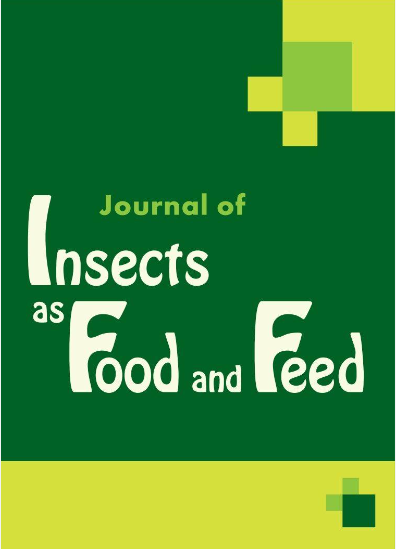作为人类食物的金龟子科动物 - 综述
IF 3.5
3区 农林科学
Q1 ENTOMOLOGY
引用次数: 0
摘要
全球人口增长和对可持续蛋白质的需求引发了人们对独特食物来源的兴趣。昆虫噬食(即食用昆虫)提供了一种解决方案,而猩红甲虫(属于猩红甲虫科)则提供了一种新颖的食物选择。全面综述强调了它们作为人类食物的潜力,它们营养丰富,对环境影响小,能够减轻传统农业的压力。营养分析表明,它们含有丰富的蛋白质、必需氨基酸、维生素和矿物质。猩红甲虫的有益脂肪酸和健康脂肪使其成为优于传统家畜的蛋白质来源。猩红甲虫在饲料转化方面表现出色,排放的温室气体较少,需要的土地也很少,因此是一种生态上可持续的蛋白质来源。人们对昆虫消费的文化态度各不相同;有些地区对昆虫消费历史悠久,而另一些地区则普遍持怀疑态度。强调营养优势、组织推广活动和引入加工过的刀疤昆虫产品可以提高人们的接受度。本综述探讨了包括大规模饲养、加工、过敏原和毒素在内的各种挑战。不断变化的昆虫食品法规需要谨慎考虑。成功与否取决于多学科的努力,包括营养、环境可持续性、文化开放性和监管协调。持续的研究与合作对于充分发掘猩红昆虫作为可持续营养食物来源的潜力至关重要,因为我们的全球人口正在不断增长。本文章由计算机程序翻译,如有差异,请以英文原文为准。
Scarabaeidae as human food – A comprehensive review
Rising global population and sustainable protein demand have sparked interest in unique food sources. Entomophagy, or insect consumption, presents a solution and Scarab beetles, part of the Scarabaeidae family, offer a novel food option. The comprehensive review underscores their potential as human food, with strong nutrition, low environmental impact, and the ability to ease strain on conventional agriculture. Nutritional analysis reveals rich protein content, essential amino acids, vitamins, and minerals. Scarab beetles’ beneficial fatty acid profile and healthy fats position them as a superior protein source to traditional livestock. Scarabaeidae excel in feed conversion, emit fewer greenhouse gases, and require minimal land, establishing them as an ecologically sustainable protein source. Cultural attitudes towards insect consumption vary; history exists in some regions while skepticism prevails in others. Highlighting nutritional advantages, organizing outreach, and introducing processed scarab products could enhance acceptance. The review addresses challenges including mass rearing, processing, allergens, and toxins. Evolving insect-based food regulations require cautious consideration. Success depends on multidisciplinary efforts including nutrition, environmental sustainability, cultural openness, and regulatory alignment. Continued research and collaboration are essential to fully unlock Scarabaeidae’s potential as a sustainable, nutritious food source for our growing global population.
求助全文
通过发布文献求助,成功后即可免费获取论文全文。
去求助
来源期刊

Journal of Insects as Food and Feed
Agricultural and Biological Sciences-Insect Science
CiteScore
7.00
自引率
17.60%
发文量
133
期刊介绍:
The Journal of Insects as Food and Feed covers edible insects from harvesting in the wild through to industrial scale production. It publishes contributions to understanding the ecology and biology of edible insects and the factors that determine their abundance, the importance of food insects in people’s livelihoods, the value of ethno-entomological knowledge, and the role of technology transfer to assist people to utilise traditional knowledge to improve the value of insect foods in their lives. The journal aims to cover the whole chain of insect collecting or rearing to marketing edible insect products, including the development of sustainable technology, such as automation processes at affordable costs, detection, identification and mitigating of microbial contaminants, development of protocols for quality control, processing methodologies and how they affect digestibility and nutritional composition of insects, and the potential of insects to transform low value organic wastes into high protein products. At the end of the edible insect food or feed chain, marketing issues, consumer acceptance, regulation and legislation pose new research challenges. Food safety and legislation are intimately related. Consumer attitude is strongly dependent on the perceived safety. Microbial safety, toxicity due to chemical contaminants, and allergies are important issues in safety of insects as food and feed. Innovative contributions that address the multitude of aspects relevant for the utilisation of insects in increasing food and feed quality, safety and security are welcomed.
 求助内容:
求助内容: 应助结果提醒方式:
应助结果提醒方式:


